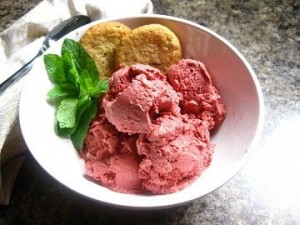Opportunity Exists for Tasty & Healthy Innovations in Ice Cream
 ‘Active’ health claims are less important and, for the time being, mostly concern with vitamins, minerals and even fibre.
‘Active’ health claims are less important and, for the time being, mostly concern with vitamins, minerals and even fibre.
Naturality is another major health trend, despite on-going issues of what ‘natural’ encompasses. This trend covers clean labels, with products free from additives/ preservatives or without E- numbers, or claims such as ‘organic’ or just ‘natural’. Lists of ingredients also tend to be shorter and more ‘understandable’ to the consumer.
The third major trend in European ice-creams is the ‘free-from’ trend, with ‘gluten-free’ on top. Indeed, the number of products marketed as gluten-free is continuing to rise globally, not only for gluten intolerance reason but also for issues such as overall well-being and digestive health. Lactose-free options are also developing in the ice-cream segment, with soy-based or even coconut-based products.
Ice-creams are firstly consumed as treats, so indulgence must remain a priority when developing new frozen products. Considering this, and the fact that health is becoming a global concern, we think that “healthy indulgence” concepts in ice-creams cannot do anything but increase in Europe. Low fat, sugar-reduced or lactose-free alone is good, but sugar-reduced with a decadent chocolate flavour sounds more attractive! Idem with fat reduction: what’s more enjoyable than a low-fat ice-cream with, in addition, a rich and creamy texture?
A perfect example of healthy & indulgent product is frozen yogurt (also called FroYo). This frozen dessert was born in the US in the 1970s but really took off in the 1980s after the improvement of recipes…and taste (considered as too tart by early consumers)! Three decades later, in 2011, the frozen yogurt segment represents 8,5% market share in value and 6,1% in volume of the North American ice-cream marketc…The trend has taken several years to cross the ocean and the FroYo segment is still in its infancy in Europe and Asia. However, there are signs that interest is growing… As in the US, it all began by out-of-home consumption in dedicated yogurt bars. Among the most popular: Myberry (France), Red Mango (Indonesia), Snog (UK), Yoh Frooz (Philippines), YooMoo (UK), Yoli (Germany), etc… Then this concept has spread into mainstream consumption and is now present in supermarkets.
Frozen yogurts are seen as healthier than most ice-cream due to their lower fat content (around 3% or less), their richness in calcium and the presence of ‘live cultures’ (probiotics among them). “Natural” is another argument often used by frozen yogurt manufacturers to describe this product.
As it is already the case with classic ice-creams, frozen yogurts could benefit from the addition of inulin and oligofructose. How?
Many FroYo have a low fat content. As fat impacts on the presence of ice crystals, on the smoothness and the creaminess of end-products, many frozen yogurts could make the most of Fibruline chicory inulin. Indeed, Fibruline is a perfect low calorie bulking agent and some references of the range feature a unique fat-mimetic effect which will give your product a creamy texture close to a standard full-fat product…without the calories!
Another fact: many FroYo on the market have a high sugar content (sometimes even higher than regular ice-creams…), which, from a nutritional point of view, is not that ‘healthy’. But do you know that Fibruline inulin and oligofructose enable to replace all or part of the sugar content of frozen products efficiently? Cosucra has developed several concepts of frozen yogurts, with no added sugar or 30% less sugar, featuring a yummy taste, a texture and a melting profile close to the reference, thanks to Fibruline.
Eventually, digestive health is an important claim in frozen yogurt (as it is in yogurt in general) with several manufacturers claiming the presence of live culture, regular or probiotic, in their product. As fibres inulin and oligofructose are also spontaneously associated with ‘digestive health’ by a large majority of consumers. In addition to this, some studies have shown that the addition of inulin into ice-creams containing probiotic bacteria resulted in an improved viability of these micro-organisms*. All of this clearly demonstrates the assets of combining Fibruline inulin or oligofructose with probiotics, in ice-creams and frozen yogurts.
*M.B. Akin, M.S. Akin & Z. Kirmaci – Effects of inulin and sugar levels on the viability of yogurt and probiotic bacteria and the physical and sensory characteristics in probiotic ice-cream, Food Chemistry Volume 104, Issue 1, 2007, Pages 93–99

































